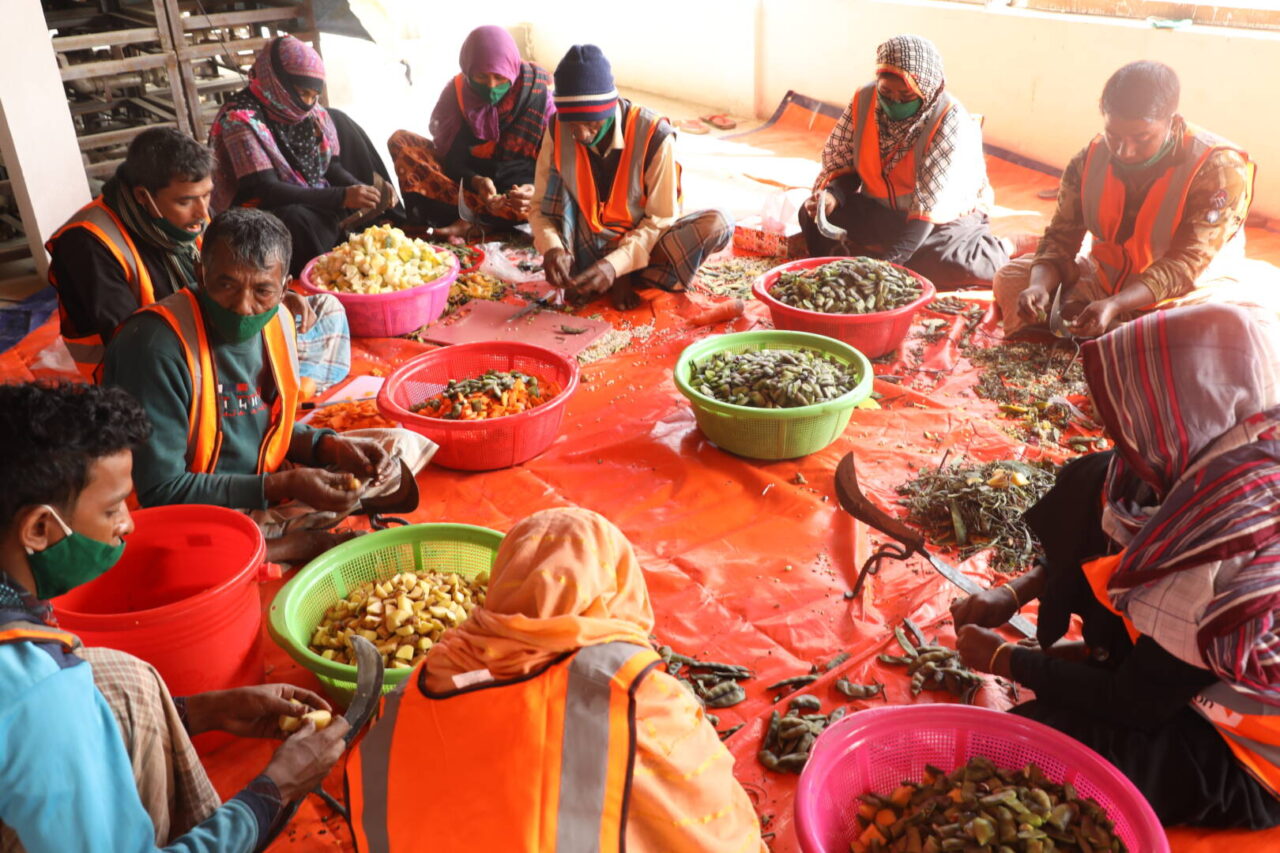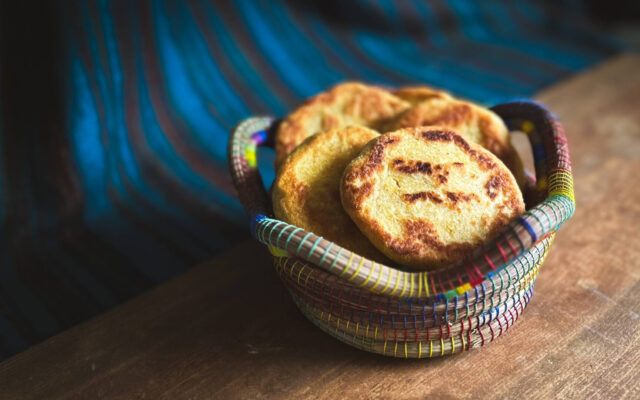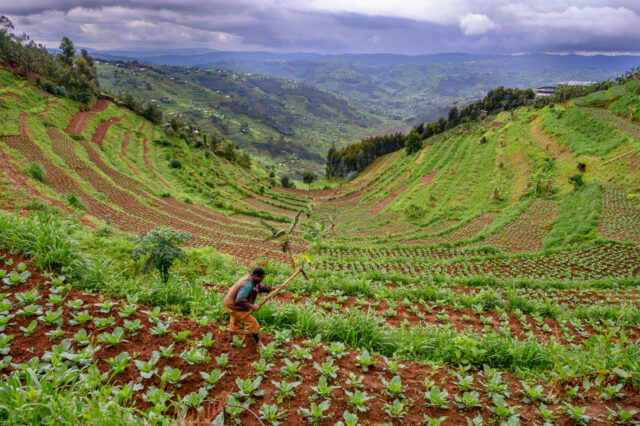Six years into the mass exodus of the Rohingya people from Myanmar to Bangladesh, nearly 1 million Rohingya refugees find themselves living in Kutupalong refugee camp in Cox’s Bazar. Kutupalong and the other overcrowded refugee camps are located in an area prone to frequent natural disasters. Many of the Rohingya people are struggling to recover from traumatic experiences, and they are completely reliant on humanitarian assistance to meet their basic needs.
Nearly half of the refugee population are children, many of whom have spent their entire lives as refugees. The future of the Rohingya people remains filled with uncertainty.
The Rohingya refugee crisis: Facts, FAQs, and how you can help
- Fast facts: Rohingya refugee crisis
- Who are the Rohingya people?
- What caused the Rohingya refugee crisis?
- What are the refugees’ living conditions in the camps?
- How is the refugee crisis impacting Rohingya children?
- How is World Vision responding to the Rohingya refugee crisis?
- How can I help Rohingya refugees in Bangladesh?
Fast facts: Rohingya refugee crisis
- In August 2017, hundreds of thousands of stateless Rohingya began to flee Myanmar due to increased extreme violence. Most have crossed the border to neighboring Bangladesh.
- The U.N. High Commissioner for Refugees described the onset of the 2017 Rohingya refugee crisis as “the most urgent refugee emergency in the world.”
- According to UNICEF, more than 960,000 Rohingya people need humanitarian assistance. Of those, over 499,000 are children.
- Bangladesh, where nearly all of the Rohingya refugee camps are located, is among the most natural disaster–prone countries in the world. From April to November, heavy monsoon rains make life more perilous for refugees in the overcrowded camps.
- Cyclone Mocha made landfall on May 14, 2023, near the Myanmar–Bangladesh border, causing widespread devastation in Rohingya camps.
Who are the Rohingya people?
The Rohingya people are a predominantly Muslim ethnic minority group residing in Myanmar’s northern Rakhine State, which shares borders with Bangladesh and India. Though the Rohingya have lived in Myanmar for centuries, they are not recognized as an official ethnic group and have been ineligible for citizenship since 1982, rendering them stateless. The Rohingya people were again not counted in Myanmar’s most recent census in 2014.
Consequently, even before the current crisis, Rohingya children and families endured immense vulnerabilities. Because of their stateless status, they lack legal rights and protection, which exposes them to exploitation, including human trafficking, child labor, child marriage, gender-based violence, and other abuses.
What caused the Rohingya refugee crisis?
The Rohingya people have long faced violence and discrimination in Myanmar. Armed conflict escalated in August 2017 in Rakhine State, causing Rohingya to flee to nearby Bangladesh. U.N. Secretary-General António Guterres described the situation in September of that year as “the world’s fastest-developing refugee emergency and a humanitarian and human rights nightmare.”
What are the refugees’ living conditions in the camps?
Living conditions in Rohingya camps are challenging and substandard. People face overcrowding, inadequate shelter, limited sanitation facilities, scarce access to clean water, limited access to healthcare, and a lack of basic services. These conditions exacerbate their vulnerability to health risks, exploitation, and protection concerns.

How is the refugee crisis impacting Rohingya children?
Rohingya children face significant challenges and vulnerabilities due to the refugee crisis, including:
- Limited educational opportunities: Many Rohingya children are unable to attend school due to a lack of resources and facilities in refugee camps.
- Health risks: Overcrowded living conditions contribute to many health issues, including the rapid spread of diseases and malnutrition. Also, the lack of essential services, such as access to clean water, sanitation facilities, and adequate healthcare, further endangers Rohingya children, leaving them vulnerable to preventable illnesses and health-related issues.
- Protection concerns: Rohingya children are at a higher risk of abuse, exploitation, trafficking, and gender-based violence, as well as being forced into child labor and child marriages.
- Psychological distress: The difficult experiences of displacement, such as witnessing violence and being separated from family, profoundly impact the mental well-being of Rohingya children.
How is World Vision responding to the Rohingya refugee crisis?
World Vision has served in Bangladesh since our emergency response in 1970 following the devastating Great Bhola Cyclone that claimed at least 300,000 lives. Our programs contribute to the well-being and empowerment of refugee and host communities. Through our dedicated advocacy efforts with international, national, and local governments, World Vision works to uphold and safeguard the rights of refugees. Our goal is to ensure the safety and dignity of refugees while advocating for their secure and voluntary repatriation to Myanmar.
World Vision operates in 34 Rohingya refugee camps. Between 2017 and 2022, we supported over 584,700 refugees. Throughout this time, our focus remained steadfast on serving the most vulnerable people through the following key programs:
- Child protection: We engage children, parents, faith leaders, and government leaders to increase protection for children, including the prevention of child marriage. Through workshops and support groups, World Vision promotes awareness on power dynamics, violence prevention, healthy relationships, and anger management. We also help children get access to professional case management services in the camps.
- Food security and livelihoods: Through our partnership with the World Food Program (WFP), we reached more than 253,000 refugees with food assistance. World Vision is the WFP’s largest implementing partner in the world. In addition, we distributed monthly fresh-food vouchers, enabling families to purchase a variety of nourishing food, including eggs, meat, and fresh produce. To support livelihoods, we equipped families with seeds and training so they can grow, cultivate, and sell vegetables.
- Nutrition: We actively prevented and treated malnutrition in children under 5 and pregnant and breastfeeding mothers. To further support the nutritional needs of pregnant women and breastfeeding mothers in particular, World Vision, in partnership with the WFP, distributed special vouchers for vitamin-rich, high-protein food items. Through supplementary and therapeutic feeding in our five centers, we have supported more than 44,000 people.
- Water, sanitation, and hygiene (WASH): Installation of deep wells, latrines, hand-washing stations, and bathing cubicles has benefited more than 300,000 people in 10 camps.
- Education: We have provided informal education for 9,472 children, including 284 learners with disabilities, in our 148 learning centers. Of the centers, we established 64 in partnership with UNICEF. These centers serve as safe havens, offering routine, stability, and psychosocial support for children and involving families through parent committees and child protection workshops. World Vision has also played a significant role in the education sector response by developing curriculum, standardizing educational materials, and engaging faith leaders to address cultural barriers that hinder girls’ education.
- Gender-based violence prevention: To prevent and respond to gender-based violence in Rohingya refugee camps, we established safe spaces known as the Women and Girls Safe Space. Vocational training offered at the centers has empowered women economically and socially. At the same time, the People’s Corner encourages men’s involvement in ending such violence by engaging men and boys as advocates for gender equality, equipping them to support women and girls in their families.
- Host communities: Recognizing the profound impact of the Rohingya influx on local communities, who were already serving the most vulnerable communities in Bangladesh, by supporting community savings groups and income-generating activities. In the Ukhiya community, our child sponsorship program focuses on education, literacy, child protection, and livelihood initiatives, including food security and nutrition programs, reaching an estimated 26,000 people. Additionally, through a $18 million grant from USAID investing in the Emergency Food Security project, we were able to provide essential food security and support to more than 5,200 people in affected communities.
Edgar Sandoval Sr., president and CEO of World Vision, visits a facility in Bangladesh where Rohingya refugees “shop” for the things their families need.
How can I help Rohingya refugees in Bangladesh?
Because Rohingya refugees are not allowed to work due to their lack of citizenship, they rely on aid from World Vision and other humanitarian organizations to meet their daily needs.
- Pray for children and families who struggle to survive as refugees as the crisis enters another year.
Dear Lord, we pray for the families who are struggling as refugees, especially as the crisis continues into another year. We ask for Your guidance and support for those impacted by this challenging situation. Lord, we pray for strength and resilience for all Rohingya refugees and for the international community to continue offering assistance and solutions to improve lives and livelihoods.
- Give to World Vision’s Refugee Children’s Crisis Fund to help provide for their needs.
Chris Huber and Sevil Omer of World Vision’s U.S. staff and Karen Homer, public engagement director for World Vision’s Rohingya refugee response in Bangladesh, contributed to this article.






